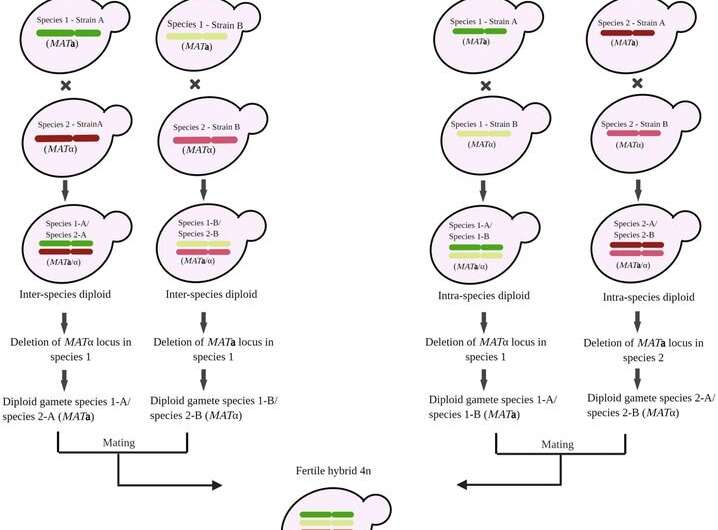New yeast biodiversity for brewing

In a new study looking at the fundamentals of biology, scientists at The University of Manchester and the University of Leicester have developed unique fertile hybrid yeast strains that offer novel and exciting options for flavors, aromas, and brewing processes for the beverage industry.
The newly created hybrid yeast strains have been shown to successfully breed and produce offspring with specific desirable characteristics required for the beverage manufacturing process.
Naturally, hybrid yeasts are infertile, and their specific characteristics cannot be passed on. This previously required brewers to use selective methods to achieve the desired traits and has meant that the fermentation industries have so far missed out on potential new characteristics that the large genetic diversity of yeast hybrids affords.
The type of yeast used in the fermentation process influences how a beer tastes once it has been brewed. There are currently two main categories of yeasts, ale and lager, plus hundreds of variations used by modern day brewers in a booming global industry. Developing yeasts to give new flavors has been a goal of many brewers since the 1800s.
Now, as reported in the Proceedings of the National Academy of Sciences, Professor Daniela Delneri, Professor of Evolutionary Genomics at the Manchester Institute of Biotechnology, and her team have succeeded in producing fertile yeast hybrids that are able to breed and generate a large number of progenies with diverse genetic traits.
Professor Delneri says of the science: "This research tackles the fundamental issue of hybrid sterility and multigenerational breeding. With my colleague Professor Ed Louis at the University Leicester, we were able to overcome species barriers and pinpoint the genetic traits unique to the hybrids. This technology has the ability to revolutionize the current practices for strain selection by allowing, via breeding, the rapid creation of efficient tailored yeasts carrying specific, novel, and important traits.
"As well as opening opportunities in food and drink production, this approach could be used to develop novel yeast "cell factories" that could be used in the field of industrial biotechnology to sustainably biomanufacture pharmaceuticals, chemicals and fuels."
This research demonstrates how the potential for enhancing natural biodiversity and developing new hybrids is greater than expected and will offer new ways for industry to generate new and exciting consumer choices.
This research was carried out as part of a BBSRC-funded project in collaboration with SAB-Miller and AB-InBev—the world's largest brewer. It also featured as part of the EU Horizon 2020 funded project "Aromagenesis."
Dr. Philippe Malcorps, AB-InBev "yeast guru," said "We are excited by these findings and pleased to have been able to support this research. The proof of concept opens doors to new innovations we can bring to our portfolio offering exciting new flavors via fermentation."
More information: Samina Naseeb et al, Restoring fertility in yeast hybrids: Breeding and quantitative genetics of beneficial traits, Proceedings of the National Academy of Sciences (2021). DOI: 10.1073/pnas.2101242118
Journal information: Proceedings of the National Academy of Sciences
Provided by University of Manchester



















